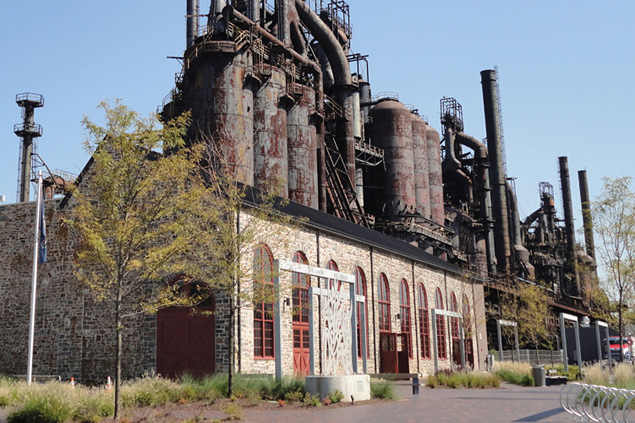What is SteelStacks?
SteelStacks is a ten-acre campus dedicated to arts, culture, family events, community celebrations, education and fun. Once the home plant of Bethlehem Steel, the second largest steel manufacturer in the nation, the site has been reborn through music and art, offering more than 1,000 concerts and eight different festivals annually.

When guests visit the SteelStacks campus, the first thing they usually notice are the towering ‘stacks’ after which the campus is named. What many people may not realize is that these iconic structures are actually a series of five blast furnaces that were used in the iron making process at Bethlehem Steel for decades.
Stacks Facts
- The two largest furnaces are more than 230 feet tall
- From the west side of the “A” furnace (most westerly) to the east side of the “E” furnace it’s approximately 1,100 feet – almost a quarter-mile!
- The A furnace is the oldest, dating from 1915
- The furnaces each produced 2,600-3,000 tons of iron per day. Producing one ton of iron requires 3,366 pounds of ore, 1,676 pounds of coke and 724 pounds of limestone
- Most of the iron was used in steelmaking, but a small percentage went to the iron and ingot mold foundries
- The furnaces were last operated Nov. 18, 1995
- At one time there were seven furnaces
Source: National Museum of Industrial History, The Story Behind SteelStacks

For nearly a century, the Bethlehem Steel plant in Bethlehem served as the economic lifeblood of the community, employing tens of thousands of people while producing the steel that built our nation’s skyscrapers, bridges and even the U.S. Navy, helping win two World Wars in the process. In 1995, however, after a nearly 120-year history of steel production on the site, the plant closed its doors forever, leaving the region with a void that seemed impossible to fill.
Rather than demolish the historic mill or walk away and let it fall apart, the community rallied around the iconic plant, working hard to bring new life to the former industrial giant. In 1999, the City of Bethlehem, Bethlehem Area School District and County of Northampton – the three local taxing bodies – established a Tax Incremental Financing (TIF) district on the property, dedicating any future tax dollars generated from new business on the site to helping revitalize the former steel plant.

Then, through a partnership involving the nonprofit ArtsQuest, the City of Bethlehem, the Bethlehem Redevelopment Authority, local public television station PBS 39 and Sands BethWorks Retail LLC, which donated the land for the project, plans were put in place to transform the site into an arts and entertainment district that would showcase music, art, festivals, educational programming and more throughout the year.
Over the past several years, more than $70 million has been invested into the SteelStacks project through state and federal grants and generous contributions from corporate and private donors realizing the enormous benefits to redeveloping the property. Today, the former steel plant is once again thriving, this time as one of the premier destinations in the Northeast for music, art and entertainment. Since its opening in spring 2011, more than one million people have visited SteelStacks to enjoy 1,750-plus musical performances, films, community celebrations and festivals including Musikfest, the largest free music festival in the nation!
The History of Bethlehem Steel and SteelStacks
| 1863 | The Bethlehem Iron Company, originally founded as the Saucona Iron Company in 1857, opens on this site and makes the first iron rails for the local railroad. |
| 1873 | In October, the first steel (for steel rails) is produced on the site. |
| 1899 | The Bethlehem Steel Company is established. |
| 1904 | The Bethlehem Steel Corporation is officially formed. |
| 1916 | Bethlehem Steel becomes the nation’s No. 2 steel manufacturer behind U.S. Steel. |
| 1930 | The Chrysler Building in New York (the world’s tallest building for 11 months) is completed. Bethlehem Steel’s wide-flange beams developed two decades earlier, made the skyscraper era possible. |
| 1937 | The Golden Gate Bridge is completed. Bethlehem Steel is an integral part of the 83,000 tons of steel used in the project. The awesome orange color that you see here at ArtsQuest Center is the same color used on the Golden Gate Bridge – International Orange. |
| 1943 | During World War II, more than 31,000 people – an all-time high – work at the Bethlehem plant. |
| 1968 | Madison Square Garden in New York City opens with a salute to the USO starring Bing Crosby and Bob Hope. In 1966, Bethlehem Steel started producing steel used in the construction of the famous arena. |
| 1995 | The Bethlehem plant closes, marking first time in more than 120 years that steel is not made on the site. |
| 2005 | On a crisp November day, ArtsQuest, PBS 39, Sands Casino Resort and City of Bethlehem officials gather in the former Bethlehem Steel No. 8 Hammer Shop to announce the SteelStacks arts campus. |
| 2010 | In mid-January construction begins on the 65,000-square-foot, four-story ArtsQuest Center. Fifteen months later – in May 2011 – the building opens to public. |
| 2011 | The Levitt Pavilion SteelStacks opens in July, followed by PBS 39’s new broadcast center later that summer. The Levitt presents more than 50 free concerts for the community each summer. |
| 2012 | The new Bethlehem Visitor Center, located in the 1863 Stock House – the oldest building on the SteelStacks site – opens in October. |
Sources
“Forging America: The Story of Bethlehem Steel,” The Morning Call Souvenir History Book of The Borough of South Bethlehem, Pennsylvania Golden Gate Bridge, Highway and Transportation District Madison Square Garden










